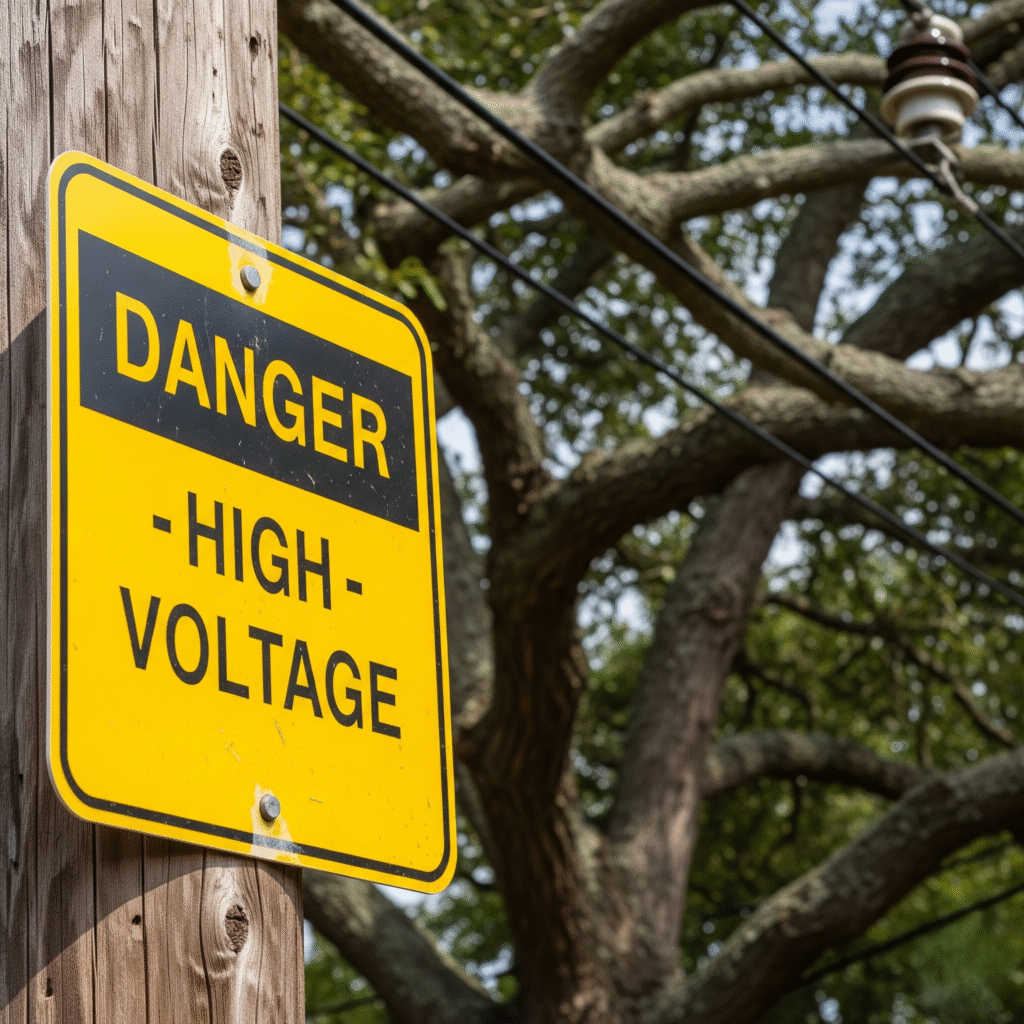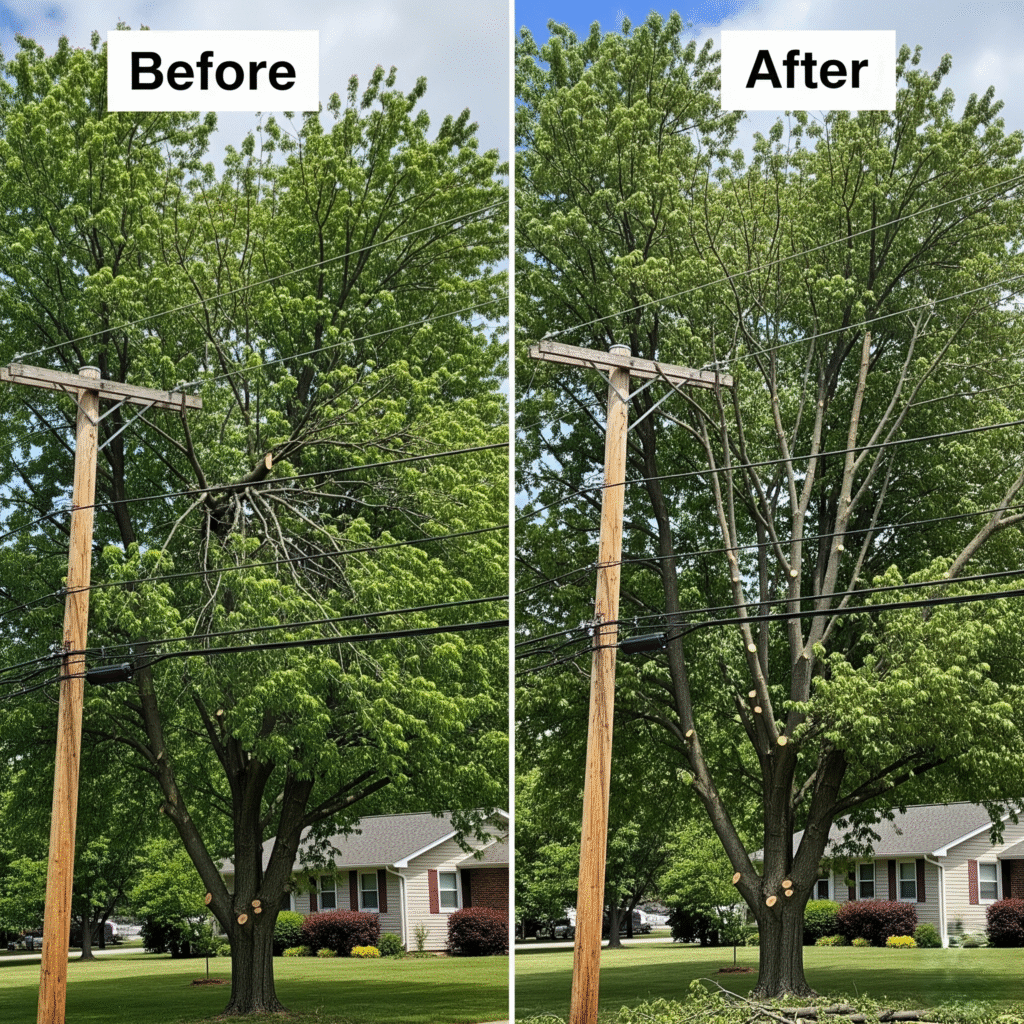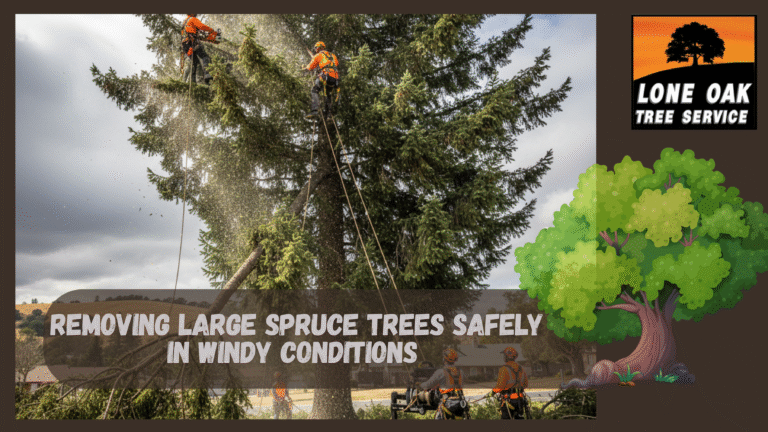Trees add beauty, shade, and value to your property, but when branches grow too close to power lines, they become a serious safety hazard. Overgrown limbs can cause power outages, fires, and even electrocution risks. This is why understanding how and when to trim branches near power lines is crucial for every homeowner.
The Risks of Overhanging Branches Near Power Lines
1. Electrical Hazards
Branches that touch or sway into power lines can conduct electricity, creating a dangerous path for current to travel. This can lead to electrical fires or serious injury if someone attempts to prune without proper precautions.
2. Power Outages
One falling branch is enough to cut off power for hundreds of homes. Storms, strong winds, and heavy snow can make these incidents more likely.
3. Property Damage
A downed branch can not only damage the lines but also fall onto roofs, vehicles, or fences, leading to costly repairs.
Knowing Who Is Responsible for Tree Trimming
Many homeowners assume trimming is entirely their responsibility, but in reality, local utility companies often maintain clearance for main power lines. However, if the trees are on your property and affecting service lines running from the pole to your house, you may be responsible.
Always check with your local electricity provider before attempting any work. They can:
- Inspect the site
- Confirm responsibility
- Schedule professional trimming if needed
Why You Should Avoid DIY Tree Trimming Near Power Lines
While trimming small shrubs and branches away from your home might be safe, anything near live power lines should never be handled by an untrained person.
Risks of DIY near power lines include:
- Electrocution from indirect contact
- Injury from falling branches
- Violating local regulations and fines
Fact: Even wooden ladders and “insulated” tools can conduct electricity under certain conditions.

Safe and Effective Trimming Practices
When dealing with branches at a safe distance from the power lines, homeowners can follow these best practices:
1. Maintain a Safe Clearance
The U.S. Occupational Safety and Health Administration (OSHA) recommends maintaining at least 10 feet of clearance from power lines.
2. Use Proper Tools
- Pole pruners with non-conductive fiberglass handles
- Sharp pruning shears or saws for clean cuts
- Safety glasses and gloves
3. Trim During the Right Season
Late winter or early spring is the best time for trimming, as trees are dormant and easier to shape without stressing them.
4. Cut in Sections
Instead of cutting a large branch at once, remove it in smaller sections to avoid uncontrolled falls.
When to Call a Professional Arborist
You should always hire a licensed arborist when:
- Branches are within 10 feet of a power line
- The tree is tall enough that it may fall onto the lines
- You lack the necessary safety gear and training
Professional tree trimming companies have insulated tools, climbing harnesses, and bucket trucks to perform the work without risking injury or power outages.
Regulations and Compliance
Most states and municipalities have tree-trimming ordinances to ensure public safety. Violating these can result in fines or liability if damage occurs. Before trimming, contact:
- Local utility company
- City or county offices
- HOA (if applicable)
Preventive Tree Care Tips
The best way to avoid risky trimming is to maintain trees regularly so branches never get close to power lines.
- Plant new trees far from electrical lines (at least 20 feet for large trees)
- Choose low-growing species near lines
- Inspect trees after storms for damage

Conclusion
Trimming branches near power lines isn’t just about maintaining a neat yard; it’s about safeguarding lives, preventing property damage, and avoiding costly legal trouble. While minor trimming can be done by homeowners, anything close to live wires should be left to qualified professionals.
By knowing the risks, following safety guidelines, and scheduling regular maintenance, you can ensure your property stays safe and your power stays on year-round. Contact us today!




